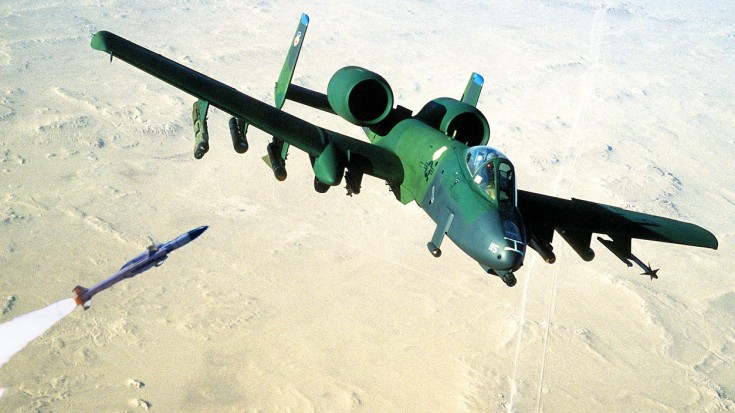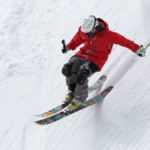This almost unbelievable story comes to us from Operation Desert Storm. On February 6th, 1991, Captain Paul “JP” Johnson took off in his A-10 Thunderbolt II as he did dozens of times before. Regarded as one of the best A-10 pilots of all time, even he described his behavior that day as “driving his fangs into the floorboard, growing one eyebrow and saying “hoorah.”
“Do you need assistance?”-“You bet I do!”

After being in the air for too long already, visibility being extremely low and hostile fire all around him, he wanted to take out an enemy radar site. Being young and full of testosterone, he didn’t take no for an answer. Although his monitors were blinded from the dense clouds and his wingman couldn’t see him, he thought he could do it. Then, after taking a dive at the target, his whole plane shook.
His right wing got hit by a SAM (surface-to-air missile) and when he looked outside, he could see his wheel. That’s something you shouldn’t be able to see if your plane was in one piece. After that, his expertly maneuvered his plane back, but it was the great features of the Hog that made this a success story.
Our Instagram is the cat’s pajamas:
 After only 22 sec., the F-16 was nose-down almost 50 deg. below the horizon and going supersonic. The shocked instructor called “2 recover!” as the student passed 12,320 ft. at 587 kt. Two seconds later, with the nose down in a 55-deg. dive, altitude at 10,800 ft. and speed passing 613 kt., the worried instructor again calls “2 recover!” In a little less than another 2 sec., as the now frantic instructor makes a third call for the student pilot to pull up, the Auto-GCAS executes a recovery maneuver at 8,760 ft. and 652 kt.
After only 22 sec., the F-16 was nose-down almost 50 deg. below the horizon and going supersonic. The shocked instructor called “2 recover!” as the student passed 12,320 ft. at 587 kt. Two seconds later, with the nose down in a 55-deg. dive, altitude at 10,800 ft. and speed passing 613 kt., the worried instructor again calls “2 recover!” In a little less than another 2 sec., as the now frantic instructor makes a third call for the student pilot to pull up, the Auto-GCAS executes a recovery maneuver at 8,760 ft. and 652 kt.
The student pilot at this point comes around and pulls back on the stick, momentarily increasing Gs beyond the Auto-GCAS standard recovery level of 5 to 9.1. Minimum altitude by now is around 4,370 ft., with as little as 2,940 ft. indicated on the radar altimeter. From loss-of-control to recovery takes just under 30 sec.
Our Instagram is the cat’s pajamas:

The Edwards AFB-based 416th Flight Test Sqdn.—which evaluated, perfected and tested the system prior to fleet release—is currently working on a follow-up Automatic Integrated Collision Avoidance System (Auto-ICAS) that combines the recently developed Automatic Air Collision Avoidance System (Auto-ACAS) with the ground protection provided by Auto-GCAS. By making the air-to-air collision avoidance system "ground aware," the Auto-ICAS will provide the world’s first all-aspect automatic protection system for a production aircraft. The 416th is also working on a Hybrid Flight Control Computer that will enable older analog F-16s to use digital applications like Auto-ACAS.
Our Instagram is the cat’s pajamas:




















